In 1974, Gérard Thevenot, a student at ISIN, an engineering school in Nancy, wishing to satisfy his desire to fly, acquired the plans for the Seagull, a delta wing built in the United States. Having neither the right materials on hand nor the exact dimensions of the model he built, judging by hindsight, a wing with greater aspect ratio than expected and therefore better performance than expected. Quickly enthusiastic by the performance of the new wing, his flight mates asked him to build them similar ones. These first wings are called “seagull”, literal translation of the original model.
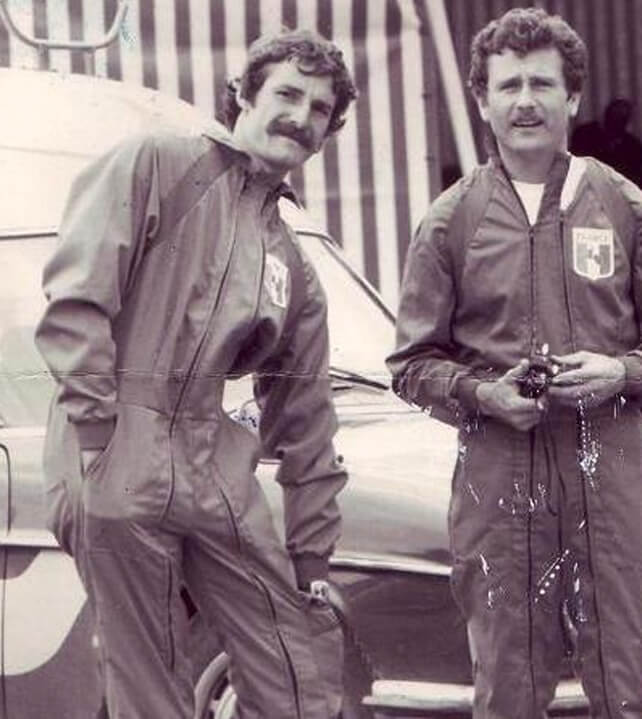
Jean-Marc Thevenot, Gérard’s older brother, seeing that he has a better command of theory than tools, helps him build his first wings. Their production continues to increase and finding the adventure promising, he proposes to set up their business.
By combining Gérard’s design and piloting talents with Jean-Marc’s good management and intuitions, La Mouette is gradually gaining in size and experience, gradually contributing to the performance and safety of the sport.
In 1979, La Mouette developed the ATLAS, this legendary wing which revolutionized the world of the delta. Introducing rigid and preformed aluminum slats, a one-piece leading edge pocket, mylars inserted in this pocket, the passage of the upper side cable through the sail, a double surface start, the famous folding umbrella, which brought performance and safety and ease of piloting to a much higher level than the competitors of the time.
More than 8000 Atlases are sold around the world and the model inspires many copies. Today the ATLAS remains a benchmark in terms of safety and fun and is still used in schools and for the first big flights. Moreover, the technological solutions developed on this model remain used by all manufacturers on current deltas.
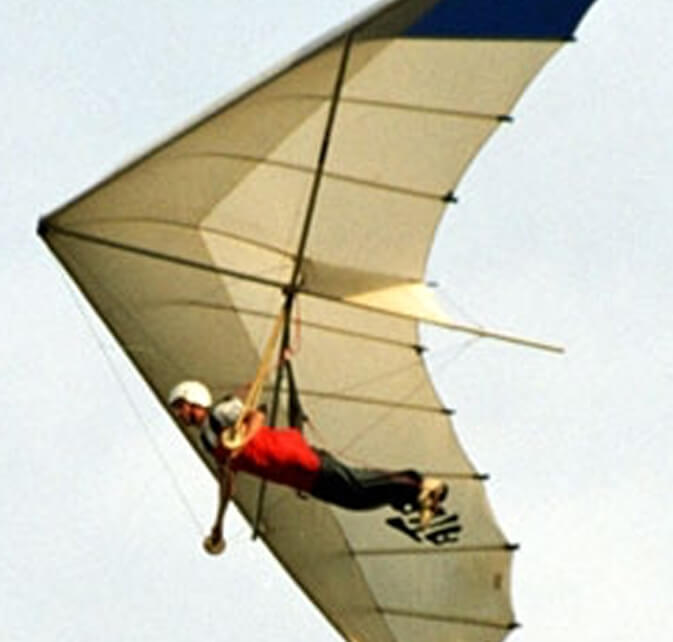
Over the years, experience, constant improvement of the wings, seriousness, the company has risen to the highest level and is recognized as the world number one manufacturer of delta wing and pendular ULM, even seeing itself rewarded by the ministry. Of the industry. Winning numerous European and World titles and breaking multiple records, La Mouette wings have often been ahead of trends, innovations and performance.
In 1982, La Mouette developed its first Ultra Light Motorized ULM Pendular and invented the ULM towing technique which consisted of pulling a delta wing behind an ULM to overcome the lack of mountains in countless regions. The delta wing is pulled by a rope attached directly to the pilot’s harness and not to the wing, another innovation on the pendulum side to achieve towing, the rope passes through the center of the propeller. Jean Marc and Gérard then founded the Cosmos company to manufacture the ULM trolleys to be fixed under the La Mouette wings.
In 1986, seeing the potential represented by the paramotor, the company decided to develop their own model.
In 199? the seagull and Cosmos separate administratively and financially (the shares are sold to Renaud Guy) although still sharing the same premises and retaining the commercial partnership.
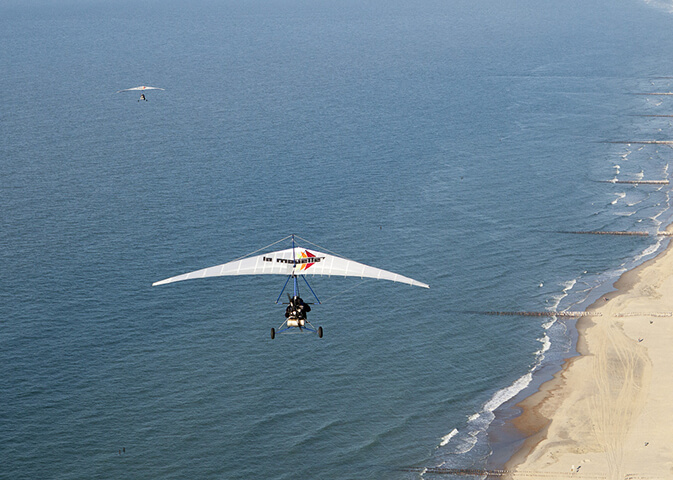
La Mouette then focused exclusively on the development and production of new free-flight wings and power wings, acquiring many years of development and design of wings that were safe, resistant and unmatched in handling.
In 1999 the skydancer was marketed and used in particular in the making of films. A version with retractable undercarriage has been developed so that a camera man on a swivel seat in the front seat can film at 360 °. Jacques Perrin’s production company Galatée acquires one to make films for the futuroscope and partly in the migrating people
The TOP Secret then the TSUNAMI made their appearance in rigid wings.
In 2003, thanks to its professionalism and a fair and precise design, La Mouette developed the “IPSOS” model for ULM Pendulaire. Based on the previous “Chronos” model, this wing has an optimum weight / resistance ratio.
Available in 5 sizes: The 12.9, 14.9 and 16 for very high performance, high speed and great maneuverability inherited from hang gliding. The 16, 9 and 19 offer a wide speed range and forgiving handling.
In 2007, the COSMOS company began judicial liquidation. The Seagull having concentrated its products on the ULM and while the wings were sold under the COSMOS brand
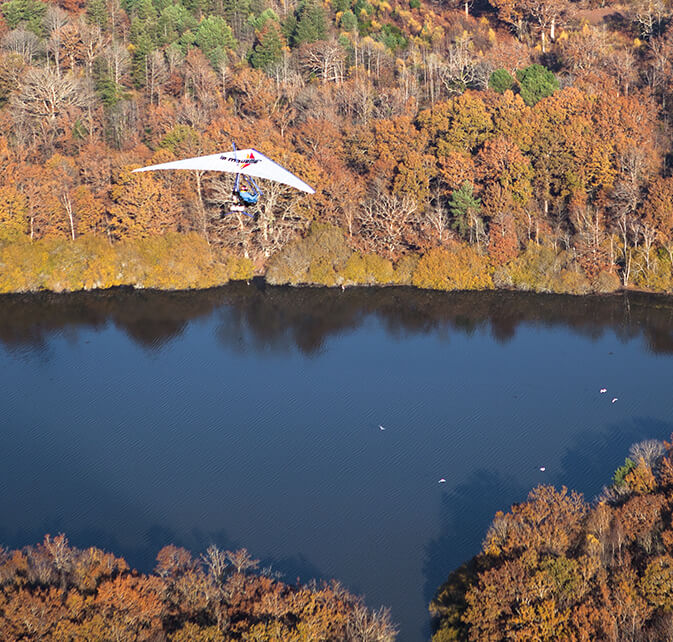
The year 2009 marks a revival for La Mouette, determined to reinvest in innovation, efforts have turned to the development of a new range of Pendular ULMs to complete the already existing range as well as safety equipment for aircraft. Delta harness.
The Seagull is also preparing to face the challenges of the rising generation: Gérard Thevenot has already developed a Pendulaire prototype powered entirely by hydrogen in time to cross the Channel on the occasion of the 100th anniversary of the same crossing by Louis Blériot.
He begins a series of premieres and demonstrations to promote this energy of the future.
In 2010 an industrialized version with batteries is marketed, it is named SAMSON (without sound) because it does not make any noise and the carbon fiber which constituted the first carts recalls the hair of the eponymous hero. The primary objective is to be able to take a passenger in an electric Ulm, the trolley is then optimized in terms of weight.
The same year the ORYX range makes its appearance
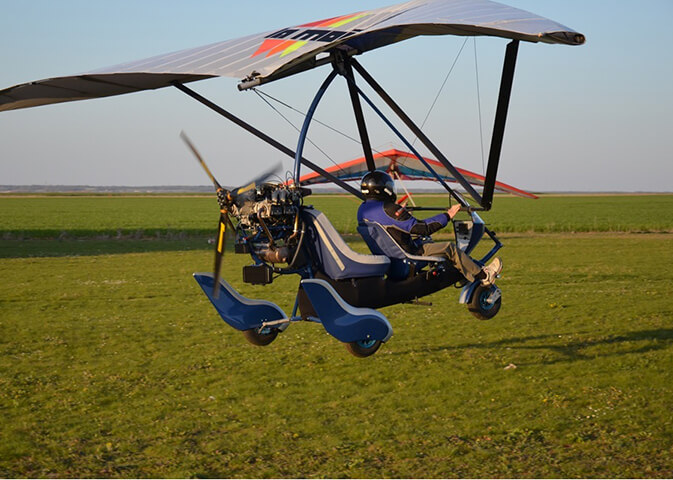

La Mouette Team wishes to commemorate Jean Luc Rousseau
our fellow collaborator for 40 years. Many pilots, clients, dealers and providers have dealt with Jean Luc, his constancy and professionalism have enormously contributed to the quality and the service of La Mouette for all these years. Jean Luc died on April 14th 2022 after prolonged health complications. We have missed his reliability and sense of humour since the day he retired. Our thoughts go to his loving family.



